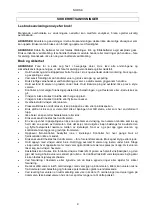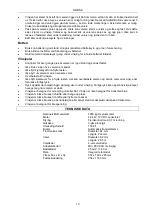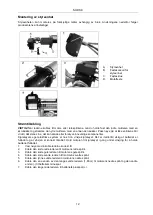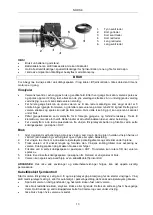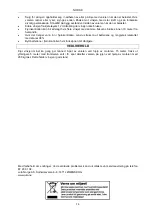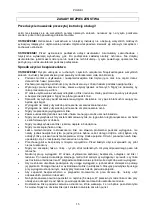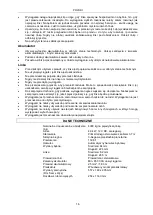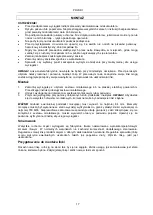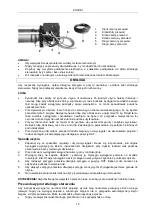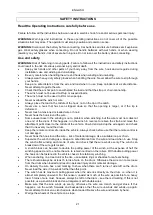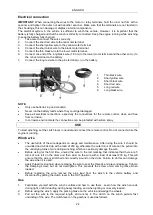
22
Battery
Only use batteries in good condition. Avoid contact with battery acid and other contaminants.
Always wear safety glasses when handling batteries.
Keep the engine running while winching to keep the battery fully charged.
Winch wire
Always check before use that the wire is in good condition and properly fastened.
Do not use the winch if the wire is damaged.
Do not move the vehicle to move the load.
Never replace the wire with a wire with less tensile strength.
Never overload the winch.
Do not move the vehicle to move the load, this can overload the wire and damage the wire or
winch, or result in dangerous jerking.
Jerking occurs when the load suddenly increases during the winching. Dangerous jerking can
occur if the vehicle moves when the wire is slack.
The winch in intended for installation in a car or boat. The winch is not intended for industrial use.
The winch must not be used to lift up or suspend loads.
The winch must not be used to lift or move people.
The winch must not used at petrol stations or other places where there are explosive fumes.
The winch is intended for a DC power supply.
TECHNICAL DATA
Nominal permitted wire load
4080 kg for single wire
Motor
4.9 kW, 12 VDC, series wound
Control
Remote control with 3.7 m cable
Gearbox
3 speed planetary gear
Gear ratio
172,8:1
Brake
Automatic drum brake
Drum size
Diameter: 64 mm
Length: 224 mm
Wire
Diameter: 8.2 mm
Length: 28.5 m
Fairlead
4-way fairlead
Recommended battery
Min. 650 CCA for winching
Battery lead
25 mm²/1.83 m
Relay
Integrated relay module
Dimensions (L x W x H)
557 x 160 x 205 mm
Retaining screw
254 x 114.3 mm
INSTALLATION
WARNING:
Disconnect the battery leads from the battery before connecting the winch.
Risk of fire and/or corrosion. Failure to follow all the instructions and safety instructions could result
in the risk of serious personal injury and/or death.
Wear safety glasses when connecting. Do not handle batteries with wet hands, or when wearing
jewellery on your hands - risk of severe burn injuries.
Do not lean over the battery when connecting.
Check before drilling that there is no risk of drill hitting a fuel line, fuel tank, brake line, or electric
cable etc.
Never run electric leads over sharp edges, or where they can come into contact with moving parts
or near parts that get hot.
Insulate and protect exposed wires and terminal blocks.
Fit terminal protectors according to the instructions.
Check that the anchor point can withstand the load from the winch's maximum pulling force.
NOTE:
The wire is wound on the drum at the factory with minimum load. The wire must be unwinded and
winded up again before using for the first time, otherwise the outer layers of the wire will be pulled in
between the inner layers, which will damage the wire.
Summary of Contents for 604-098
Page 26: ......


